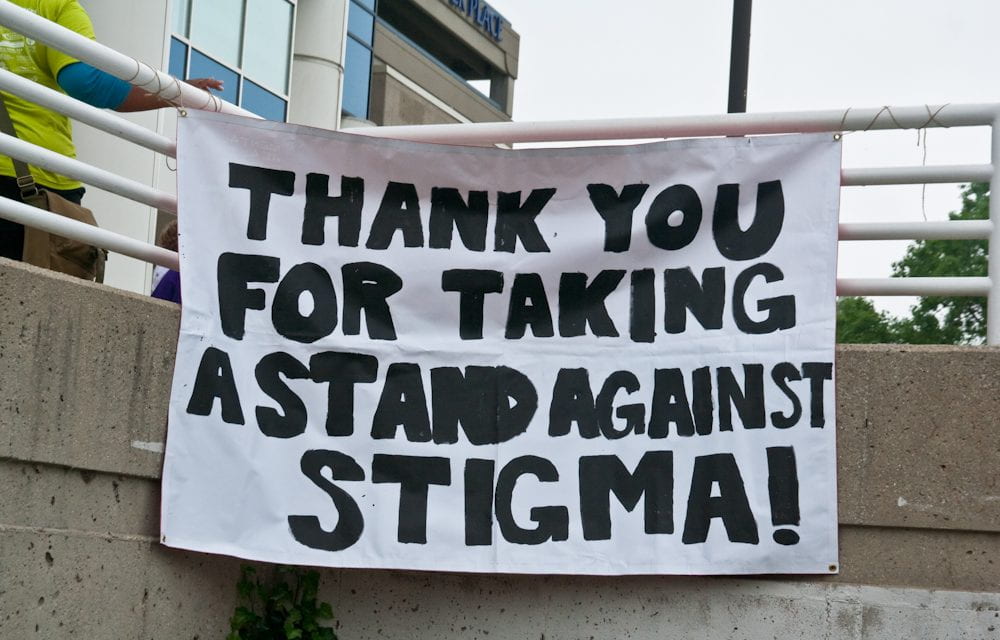Introduction
During the COVID-19 pandemic, mental health across the globe is rapidly declining due to the additional stress and turmoil from the virus, especially in developing countries like India. Over the past year, the coronavirus pandemic has led to an increase in depression cases in India, with over 43 percent of Indians currently suffering [1]. And with the recent spike in COVID-19 cases this past March, the country is undergoing yet another round of mental distress. Alas, numerous short and long-term consequences are likely to arise because India is failing to effectively compensate for this uptick in psychological issues. For instance, a few short-term consequences already visible are an increase in suicides and domestic violence cases, as well as an overburdened healthcare system. Likewise, experts predict a long-lasting effect might be seen through a substantial economic loss in India by 2030.
Possible solutions to India’s mental health epidemic might include providing access to telehealth services to expand the reach of care and raising awareness to diminish the stigmatism surrounding mental illness. To navigate the erosion of mental health in India during the pandemic, this article will discuss the status of psychological burdens prior to COVID-19, compare how the pandemic has worsened these issues, highlight the Indian government’s inadequate response, outline potential consequences of this neglect, and ultimately, recommend that India prioritizes mental healthcare, further educates its healthcare workers, and spreads awareness for mental health.
Condition of Mental Health Prior to the Pandemic
According to the United Nations, depression, anxiety, and various other mental health conditions were some of the “greatest causes of misery in our world,” costing the global economy over $1 trillion per year before the pandemic [2]. However, countries around the world buried these issues under decades of neglect, underinvestment, and understaffing—leaving populations more vulnerable when the pandemic, emerged to exacerbate mental health stressors [3]. In many developing countries across Asia, the number of mental health workers is typically lower than the World Health Organization’s (WHO) preferred number of more than 3 per 100,000 people [4]. India is no exception to this statistic, as their workforce has a significant shortage of healthcare workers, with around 0.3 psychiatrists and 0.07 psychologists to serve 100,000 people [5].
In 2017, India received the undesirable title of the world’s ‘most depressing country’ by WHO, with one in seven people suffering from a severe mental illness [6]. Indian culture also stigmatizes mental illnesses. Instead of feeling support in their battle against mental conditions, people who are open about their psychological struggles in India are greeted with disgrace and are often labelled as “lunatics” by society, which can drown their likelihood of seeking treatment beneath waves of shame and isolation [7]. Notably, in India, avoiding social disapproval at any cost is embedded into the foundation of their culture. Thus, by being forced to live in this “tight-lipped, conservative society” emotions tend to build until they explode into bombs of depression and grenades of anxiety—showering a spray of shrapnel in every direction in a domino effect of psychological destruction [8]. Because of these factors, India was unprepared to handle the added weight of the pandemic.
Mental Health in India has Declined During the Pandemic
While mental health was a serious issue neglected by the Indian government before the spread of COVID-19, the virus took that toll to a more potent level. According to WHO, the percentage of Indians who suffer from mental illnesses has grown over 12.5 percent this year due to the pandemic [9]. In a survey by the Indian Psychiatric Society, 40 percent of participants reported an increase of depression and anxiety directly linked to the virus [10]. Likewise, a recent study was conducted to evaluate the need for mental healthcare amongst the adult Indian population during the pandemic [11]. This online survey revealed that more than 80 percent of participants felt high-levels of anxiety pertaining to thoughts of COVID-19, leading researchers to conclude that there is a significant need to “intensify awareness and address the mental health issues of people during this COVID-19 pandemic” [12]. Yet, to properly understand why this issue is deserving of more governmental intervention, an observation of the factors leading to this uptake in cases is beneficial.
The implementation of non-pharmaceutical interventions (NPIs) in response to the virus, while necessary to slow its spread, has negatively impacted mental health. These governmental measures to ensure social distancing have disrupted people’s daily routines through forced isolation, major shutdowns of social environments, financial struggles, and widespread unemployment rates [13]. Similarly, by enforcing a strict stay-at-home policy, India’s domestic violence and child abuse rates have increased to a worrisome extent still unmeasurable in its fullest capacity [14]. Henceforth, women and children are experiencing a greater risk of developing mental health issues and a need for external support under NPIs [15]. In particular, because India experienced one of the worst lockdowns during the pandemic—with over 11 million COVID-19 cases collectively reported—the negative psychological effects on the population’s mental health is predicted to match that severity [16]. Thus, while many Indians adapted to a new normal, that change in routine invoked a progression of small bouts of stress to develop into larger quells of depression and anxiety that need to be addressed [17].
India’s Inadequate Response to the Pandemic
Unfortunately, despite this growing need for mental health services across the globe, many developing countries fall short on fulfilling those needs—India being one of them. Overall, the country is struggling against a multitude of issues, such as an absence of general health infrastructure, an overburdened and inefficient healthcare system, a scarcity of trained mental health professionals, a lack of advocacy for mental health, and limited funding [18]. Near the beginning of the pandemic, India came to an agreement with the United States in an attempt to mutually improve mental health services [19]. However, the potential benefits were clouded behind the dubious intent of the Indian government since it contributes “less than 1 U.S. cent on a mental health sufferer in a whole year” [20]. Likewise, a 2016 study uncovered that less than 30 million Indians were receiving psychological intervention, while nearly 150 million in total needed it [21]. Additionally, although India is the world’s sixth largest economy, their spending towards mental health is much lower than that of many low-income countries—0.05 percent of its health budget compared to the average 0.5 [22]. These statistics raise a question of India’s motives—even in spite of the level of poverty limiting the country’s efforts—as their responsibility and prioritization of mental health is falling short. Therefore, the agreement may actually be an attempt at establishing alternative endeavors, such as growing Indian businesses, instead of the assumed addressal of the impending mental health crisis [23].
On the other hand, the facilities that India does offer are vastly limited. According to a National Mental Health Survey, 83 percent of people in India with mental illnesses didn’t have access to adequate treatment options [24]. One obstacle that many citizens face in receiving this care can be traced back to where they live. For instance, there is a substantial divide between the urban and rural population in India as cities have more opportunities to seek support, whereas for some villagers in rural areas, it may take well over 30 miles to even reach a hospital or facility [25]. For many people, this added travel time and monetary guzzler is too much of a barrier to get the help they need.
Also, the level of awareness spread via campaigns and a proper education regarding mental health in India is lacking [26]. For instance, there have not been any major awareness programs for mental health to reduce feelings of shame and humiliation clouding the issue—even on World Mental Health Day—whereas the country aggressively celebrates International Yoga Day, spending about $4.5 million every year [27]. Because there is a stigmatism against mental conditions in India, the implementation of such programs is vital to their future. Along with the excessive cost of treatment and inadequate staffing to support everyone, the healthcare available in India is unequally distributed and must be improved to take on the additional weight of the pandemic.
Consequences of Neglecting Mental Health Needs
By neglecting this rising need for treatment and adequate mental health services, various negative effects both to the Indian community and its citizens are likely to follow. Based on previous public health emergencies, short- and long-term consequences from disregarded mental health needs is known to be quite impactful if not tended to early on. For example, as seen during the Ebola epidemic, infectious diseases and viruses elevate a sense of fear that manifests as social ostracization of individuals and their communities [28].
Short-Term Effects
With the additional burden of pandemic-related stress on mental health, people in India are developing various addictive coping mechanisms, such as drug abuse, alcohol dependency, and gaming addictions. According to the UN, people who previously handled stress in a healthy manner—for instance through daily exercise or meditation—are quickly finding themselves overwhelmed during the pandemic with stressors simultaneously coming from too many directions [29]. Additionally, unmet needs, particularly for depression sufferers, has led to a spike in suicide rates. Even before the pandemic, suicide was a major issue in India as they were known for having the highest suicide rates in South-East Asia [30]. Globally, India accounted for over 36.6 percent of suicide reports before COVID-19 [31]. In May 2020, the Suicide Prevention in India Foundation (SPIF) reported an upsurge of suicidal intent across the country, with nearly “65 percent of 159 mental health professionals” indicating an increase in self-harm and suicidal thoughts among their patients [32]. Also, the SPIF discovered that frontline workers in India are taking a direct hit from the surge in mental health conditions, with over 85 percent indicating they feel drained from their patients and 75 percent claiming that fatigue is affecting their work performance [33]. With healthcare professionals impacted by substantial job-related stress—on top of their own personal health concerns regarding COVID-19—the entire system’s ability to provide quality care to those in need diminishes [34].
Long-Term Effects
As for potential lingering effects of unfulfilled mental health problems, researchers are predicting a substantial economic burden is soon to come. For India, their neglect of mental health is likely to create economic losses, since the state of mental health in a country “correlates positively with its economic growth” [35]. If people are forced to deal with mental illnesses independently, this ineffective level of care can lead to adverse outcomes, such as an inability to obtain or hold a job. On the other hand, being unemployed creates financial anxiety and stress, which contributes to a worsened mental stability—thus, throwing individuals and communities into an injurious repetitive cycle [36]. The WHO estimates that between 2012-2030, the economic losses in India will total over 1.03 trillion; therefore, this is an issue that the Indian government should identify as a worthy investment [37].
Because of the Pandemic, Should India Get a Free Pass?
Alternatively, some may argue that due to the additional stress of the pandemic, India and other developing countries are doing all that they can and should be given the benefit of the doubt. For instance, an obvious barrier impeding any significant hands-on involvement is COVID-19’s overbearing presence on the healthcare system. In India, this system was overburdened before the pandemic, so add the weight of strained workers, inadequate amounts of staffing, facilities closing, and a limited supply of resources with an increased demand, and those small cracks grow until they ultimately threaten to shatter under the pressure [38]. Likewise, financial ramifications of the pandemic have demoted India from the world’s fifth largest economy to sixth, once again falling behind the UK [39]. With a strained budget, some services need to be held over others in order to benefit the most people possible. Even so, mental health has proved itself worthy of being prioritized—especially now. Not only should it be prioritized morally and logically, but legally as well. Under the Convention on Rights of Persons with Disability in 2007, India agreed that their government is “obligated to look after people’s mental health” [40]. Also, WHO outlined that attending to mental health needs is fundamental to ensuring human dignity and quality of life—a right that is guaranteed to Indians in their Constitution as a ‘Right of Life’ [41]. Overall, the inclusion of mental health in pandemic response planning is a “critical component” in recovery [42].
Solutions to Improve Mental Health Services
In order to alleviate this ‘Mental Health Epidemic,’ there are numerous solutions that India and other developing countries can introduce to their citizens. First and foremost, India needs to recognize the importance of maintaining good mental health. The physical difficulties of COVID-19 need to be fought simultaneously with the psychological distress in order to recover from this pandemic in a way that “leaves no one behind” [43]. By investing in accessible and sustainable mental health support, the response to the virus will be even more effective by assisting those in need [44]. The United Nations released a policy to emphasize this point, claiming the “decades of neglect and underinvestment” in mental health has been “exposed by the COVID-19 pandemic” in a way that countries can no longer deny [45]. For the Indian government, the best thing they could do is to run with this global momentum geared towards mental health, as everyone is in the same boat of “despair and despondency,” and start prioritizing these services [46]. To do so, India should develop policies that address poor mental healthcare, advocate about the issue and ways people can receive support, and increase the amount of qualified mental health professionals on their staff [47].
Similarly, another option is to further the development of the healthcare system. Especially in developing countries, mental health needs are overwhelming healthcare systems [48]. Regarding staff insufficiencies, an effective step forward would be to hire and train more health care workers to fulfill the increasing demand for services, as well as to integrate mental health training into primary care systems to tackle a larger population [49]. Also, to properly reimagine the system during the pandemic, the implementation of telehealth services is vital. These internet-based interventions and technologies, such as emergency hotlines and virtual therapy, can assist in bridging the gap between the supply and demand of services, thus diminishing a widespread inequality in the healthcare system [50]. While the accessibility of these services is more challenging in developing countries where technology is limited, innovative advancements—such as wireless internet balloons in Africa—are being developed to ease the brunt of this issue [51].
Most significantly, a solution especially applicable to India is decreasing the stigma surrounding mental health by raising awareness [52]. To lower this stigma and elevate the demand for services, regulations should be enacted in order to educate and sensitize Indian communities about mental health conditions, the signs and symptoms to look out for, and treatment options that are available [53]. For instance, pursuing a countrywide effort in spreading information through the mass media can mobilize endeavors in support of mental health and encourage individuals to reach out for therapy or medication [54]. Likewise, the absence of widespread literacy about mental health must be addressed by introducing psychological topics into libraries and school curriculums [55]. By integrating mental health education into India’s school system, the younger generation will be more equipped to process their emotions instead of bottling them up, as they were taught, and this will help them better handle potential mental illnesses in the future.
Overall, these efforts of building mental health support should be integrated at all levels—including workplaces, healthcare systems, and in local communities—as the people in communities are the “first line of defense” in bridging the current resource gap [56]. For example, educating the community can start by implementing the proper terminology to reduce any communication barriers. According to experts, even though India has over twenty-two languages, none of them have words that mean “mental health” or “depression,” because the practice of psychiatry is largely Western [57]. In order to transform conservative cultures like India’s, mindsets need to be open for taboo topics like mental health to become normalized in discussions [58]. Fortunately, one positive thing to come out of the pandemic to stimulate this receptiveness is a spotlight on mental health. Because more people have been affected, the conversation around psychological difficulties is more honest and empathic than ever before, which is a vital aspect to tearing down walls of stigma and misplaced judgement that all too often inhibit people from seeking help [59]. Every time physical health is introduced in conversation, mental health shouldn’t be too far behind; and every time COVID-19 is brought up, “we should talk about mental health” too [60].
Concluding Thoughts
Ultimately, these issues weighing down India’s mental healthcare system have been decades in the making; the recent pandemic has just finally exposed them. This is a chance for countries to incite change rather than letting this be just another problem swept under the rug. Thus, proper response strategies to COVID-19 should be constructed to address mental health needs—such as sensitizing populations by raising awareness, shifting services to the community, and including mental health in universal health coverage. Most importantly, communities have lost the ability to think about our brain as an organ that can “fail in some respects just like the rest of our bodies” [61]. When you break a bone, the first thing someone will suggest is for you to go the doctor to fix it. Yet, when we feel anxious or depressed, people tell you to ‘suck it up’ or see it as an indicator that you’re weak. But it should be the same reaction for both: when you’re feeling depressed, you go to a therapist or psychiatrist to fix it. We need to normalize getting help for mental illnesses, just like any other injury, and spread awareness so people understand what they’re feeling and can get the services they so desperately need. As the UN Secretary-General highlights as the core mandate of the global development agenda, there is “no health without mental health” [62].
References
[1] Mitra, Esha. “India Didn’t Prioritize Mental Health before Covid-19. Now It’s Paying the Price.” CNN, Cable News Network, 7 Sept. 2020, www.cnn.com/2020/09/06/india/india-mental-health-dst-intl-hnk/index.html.
[2] “UN Leads Call to Protect Most Vulnerable from Mental Health Crisis during and after COVID-19 | | UN News.” United Nations, United Nations, 14 May 2020, news.un.org/en/story/2020/05/1063882.
[3] The Lancet Infectious Diseases. “The Intersection of COVID-19 and Mental Health.” The Lancet Infectious Diseases, vol. 20, no. 11, 8 Oct. 2020, p. 1217., doi:10.1016/s1473-3099(20)30797-0.
[4] Bartuska, Anna D, and Marques, Dr. Luana. “Mental Health and COVID-19 in Developing Countries.” Development Matters, OECD, 6 Aug. 2020, oecd-development-matters.org/2020/08/04/mental-health-and-covid-19-in-developing-countries/.
[5] Bhatia, Anisha. “World Mental Health Day 2020: In Numbers, The Burden of Mental Disorders In India |.” NDTV, 9 Oct. 2020, swachhindia.ndtv.com/world-mental-health-day-2020-in-numbers-the-burden-of-mental-disorders-in-india-51627/#:~:text=WHO%20also%20estimates%20that%20about,Indians%20suffer%20from%20anxiety%20disorders.
[6] Llamba, Dr. Ramon. “What India Must Do to Solve Its Mental Health Crisis?” ETHealthworld.com, Economic Times, 26 Feb. 2020, health.economictimes.indiatimes.com/news/industry/what-india-must-do-to-solve-its-mental-health-crisis/74314862.
[7] Llamba, Dr. Ramon, ETHealthworld
[8] Lal, Neeta. “Pandemic Worsens India’s Mental Health Misery.” Nikkei Asia, 23 Jan. 2021, asia.nikkei.com/Life-Arts/Life/Pandemic-worsens-India-s-mental-health-misery.
[9] Bhatia, Anisha. NDTV.
[10] Mitra, Esha. CNN.
[11] Codagnone, Cristiano, et al. “Assessing Concerns for the Economic Consequence of the COVID-19 Response and Mental Health Problems Associated with Economic Vulnerability and Negative Economic Shock in Italy, Spain, and the United Kingdom.” PLOS ONE, vol. 15, no. 10, 2020, doi:10.1371/journal.pone.0240876.
[12] Roy, Deblina, et al. “Study of Knowledge, Attitude, Anxiety & Perceived Mental Healthcare Need in Indian Population during COVID-19 Pandemic.” Asian Journal of Psychiatry, vol. 51, June 2020, p. 102083., doi:10.1016/j.ajp.2020.102083.
[13] The Lancet. The Lancet Infectious Diseases, p. 8.
[14] Linn, Leticia. “Countries Must Expand Services to Cope with Mental Health Effects of COVID-19 Pandemic, PAHO Director Says.” PAHO/WHO | Pan American Health Organization, 18 Aug. 2020, www.paho.org/en/news/18-8-2020-countries-must-expand-services-cope-mental-health-effects-covid-19-pandemic-paho.
[15] “UN Leads Call…” United Nations.
[16] Mitra, Esha. CNN.
[17] Statista Research Department. “Topic: Mental Health in India–Statistics and Facts.” Statista, 16 Sept. 2020, www.statista.com/topics/6944/mental-health-in-india/.
[18] Roy, Adrija. “Mental Health Implications of COVID-19 Pandemic and its Response in India.” Int J Soc Psychiatry, NCBI, Pub. 1 Sept. 2020. doi: 10.1177/0020764020950769
[19] Rathore, Harshita. “How Committed Is India to Mental Health?” The Diplomat/The Pulse, The Diplomat, 22 Mar. 2020, thediplomat.com/2020/03/how-committed-is-india-to-mental-health/.
[20] Rathore, Harshita. The Diplomat/The Pulse.
[21] Rathore, Harshita. The Diplomat/The Pulse.
[22] Rathore, Harshita. The Diplomat/The Pulse.
[23] Rathore, Harshita. The Diplomat/The Pulse.
[24] Mitra, Esha. CNN.
[25] Mitra, Esha. CNN.
[26] Lal, Neeta. Nikkei Asia.
[27] Rathore, Harshita. The Diplomat/The Pulse.
[28] Kumar, Manasi, and Pushpam Kumar. “Impact of Pandemic on Mental Health in Lower- and Middle-Income Countries (LMICs).” Global Mental Health, Cambridge University Press, 3 Dec. 2020, www.ncbi.nlm.nih.gov/pmc/articles/PMC7750653/.
[29] Malapani, Chara. “COVID-19 and the Need for Action on Mental Health.” Columbia University Department of Psychiatry, 9 Oct. 2020, www.columbiapsychiatry.org/news/covid-19-and-need-action-mental-health.
[30] Mitra, Esha. CNN.
[31] Bhatia, Anisha. NDTV.
[32] Mitra, Esha. CNN.
[33] Mitra, Esha. CNN.
[34] Malapani, Chara. Columbia University.
[35] Statista Research Department. Statista.
[36] Rathore, Harshita. The Diplomat/The Pulse.
[37] Bhatia, Anisha. NDTV.
[38] Mitra, Esha. CNN.
[39] Llamba, Dr. Ramon, ETHealthworld.
[40] Rathore, Harshita. The Diplomat/The Pulse.
[41] Rathore, Harshita. The Diplomat/The Pulse.
[42] Linn, Leticia. PAHO/WHO | Pan American Health Organization.
[43] Cheung, Dr Eliza. “How Can We Tackle a Growing COVID-19 Caused Mental Health Crisis? – World.” ReliefWeb, OCHA Services, 19 Oct. 2020, reliefweb.int/report/world/how-can-we-tackle-growing-covid-19-caused-mental-health-crisis.
[44] Cheung, Dr. Eliza. ReliefWeb.
[45] Malapani, Chara. Columbia University.
[46] Mitra, Esha. CNN.
[47] Llamba, Dr. Ramon, ETHealthworld.
[48] Bartuska and Marques. Development Matters.
[49] Linn, Leticia. PAHO/WHO.
[50] Rojas, Graciela, et al. “Improving Mental Health Care in Developing Countries Through Digital Technologies: A Mini Narrative Review of the Chilean Case.” Frontiers in Public Health, vol. 7, 2019, doi:10.3389/fpubh.2019.00391.
[51] Bartuska and Marques. Development Matters.
[52] Llamba, Dr. Ramon. ETHealthworld.
[53] Jacob, KS. “Repackaging Mental Health Programs in Low- and Middle-Income Countries.” Indian Journal of Psychiatry, vol. 53, no. 3, 2011, p. 195., doi:10.4103/0019-5545.86798.
[54] Roy, Adrija. Int J Soc Psychiatry. NCBI.
[55] Lal, Neeta. Nikkei Asia.
[56] Cheung, Dr. Eliza. ReliefWeb.
[57] Mitra, Esha. CNN.
[58] Fielding, Sarah, et al. “What America Can Learn from the Mental Health Care Systems of Other Countries.” Talkspace, 06 Apr. 2020, www.talkspace.com/blog/america-mental-health-care-systems/.
[59] Rogers, Kristen. “Mental Health Is One of the Biggest Pandemic Issues We’ll Face in 2021.” CNN Philippines, CNN, 5 Jan. 2021, www.cnnphilippines.com/lifestyle/2021/1/5/Mental-health-biggest-pandemic-issues-2021.html.
[60] Rogers, Kristen. CNN Philippines.
[61] Marques, Dr. Luana, “COVID-19’s Impact on Mental Health and Developing Countries.” C-Span, Washington Journal Primetime, 29 Apr. 2020, www.c-span.org/video/?471594-1/covid-19s-impact-mental-health-developing-countries.
[62] Kumar and Kumar. Global Mental Health.







